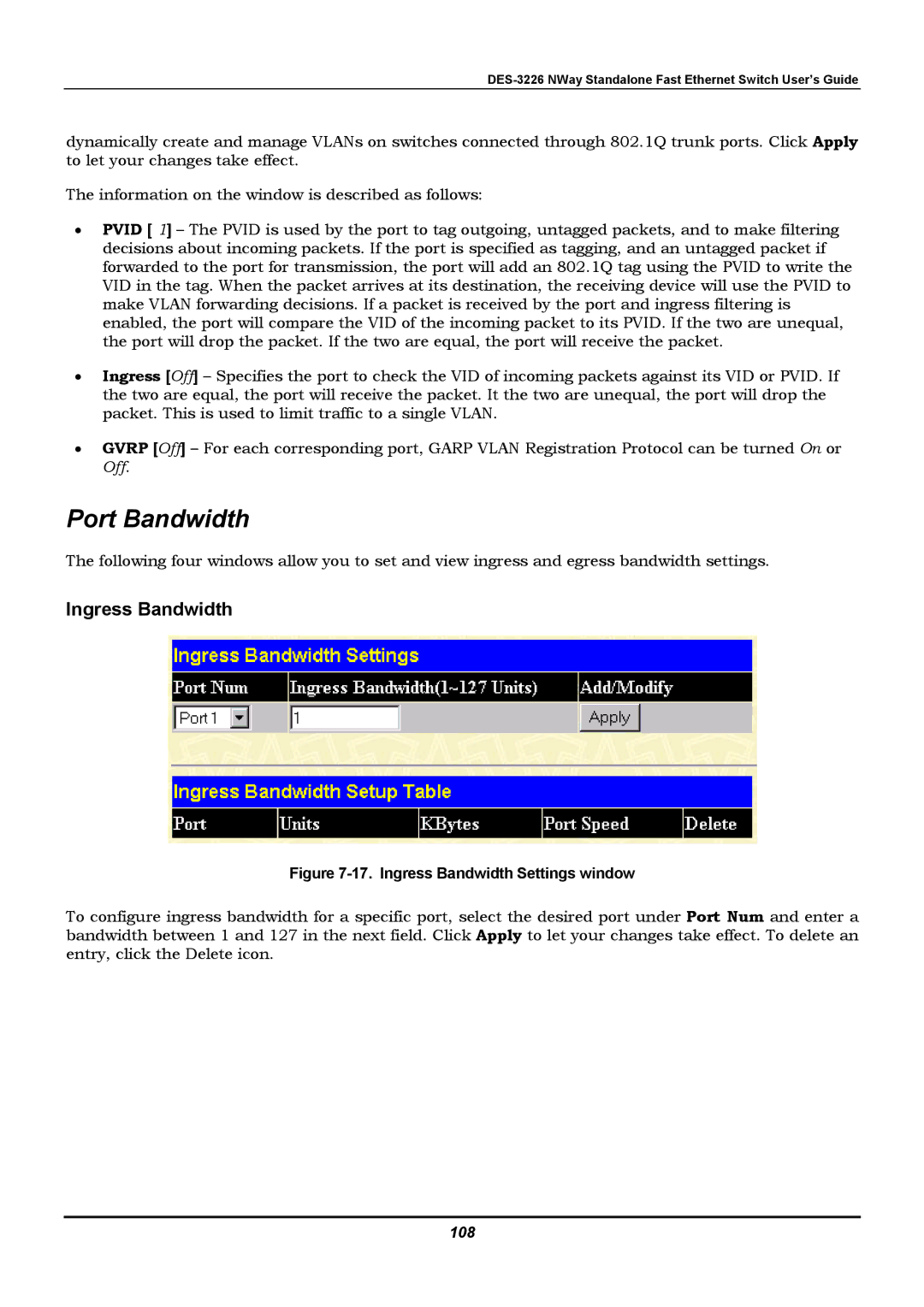
DES-3226 NWay Standalone Fast Ethernet Switch User’s Guide
dynamically create and manage VLANs on switches connected through 802.1Q trunk ports. Click Apply to let your changes take effect.
The information on the window is described as follows:
•PVID [ 1] – The PVID is used by the port to tag outgoing, untagged packets, and to make filtering decisions about incoming packets. If the port is specified as tagging, and an untagged packet if forwarded to the port for transmission, the port will add an 802.1Q tag using the PVID to write the VID in the tag. When the packet arrives at its destination, the receiving device will use the PVID to make VLAN forwarding decisions. If a packet is received by the port and ingress filtering is enabled, the port will compare the VID of the incoming packet to its PVID. If the two are unequal, the port will drop the packet. If the two are equal, the port will receive the packet.
•Ingress [Off] – Specifies the port to check the VID of incoming packets against its VID or PVID. If the two are equal, the port will receive the packet. It the two are unequal, the port will drop the packet. This is used to limit traffic to a single VLAN.
•GVRP [Off] – For each corresponding port, GARP VLAN Registration Protocol can be turned On or Off.
Port Bandwidth
The following four windows allow you to set and view ingress and egress bandwidth settings.
Ingress Bandwidth
Figure 7-17. Ingress Bandwidth Settings window
To configure ingress bandwidth for a specific port, select the desired port under Port Num and enter a bandwidth between 1 and 127 in the next field. Click Apply to let your changes take effect. To delete an entry, click the Delete icon.
